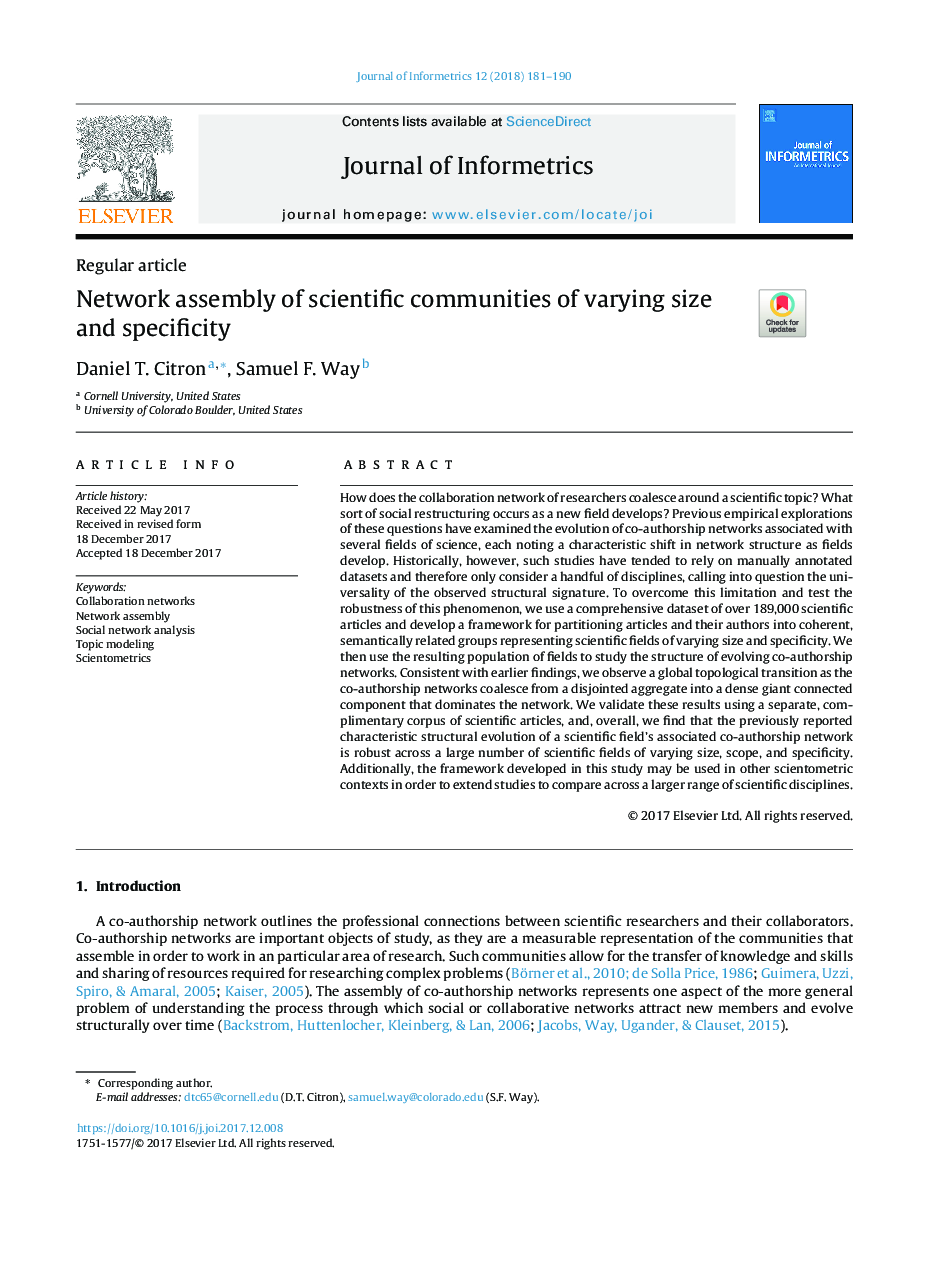| Article ID | Journal | Published Year | Pages | File Type |
|---|---|---|---|---|
| 6934189 | Journal of Informetrics | 2018 | 10 Pages |
Abstract
How does the collaboration network of researchers coalesce around a scientific topic? What sort of social restructuring occurs as a new field develops? Previous empirical explorations of these questions have examined the evolution of co-authorship networks associated with several fields of science, each noting a characteristic shift in network structure as fields develop. Historically, however, such studies have tended to rely on manually annotated datasets and therefore only consider a handful of disciplines, calling into question the universality of the observed structural signature. To overcome this limitation and test the robustness of this phenomenon, we use a comprehensive dataset of over 189,000 scientific articles and develop a framework for partitioning articles and their authors into coherent, semantically related groups representing scientific fields of varying size and specificity. We then use the resulting population of fields to study the structure of evolving co-authorship networks. Consistent with earlier findings, we observe a global topological transition as the co-authorship networks coalesce from a disjointed aggregate into a dense giant connected component that dominates the network. We validate these results using a separate, complimentary corpus of scientific articles, and, overall, we find that the previously reported characteristic structural evolution of a scientific field's associated co-authorship network is robust across a large number of scientific fields of varying size, scope, and specificity. Additionally, the framework developed in this study may be used in other scientometric contexts in order to extend studies to compare across a larger range of scientific disciplines.
Related Topics
Physical Sciences and Engineering
Computer Science
Computer Science Applications
Authors
Daniel T. Citron, Samuel F. Way,
